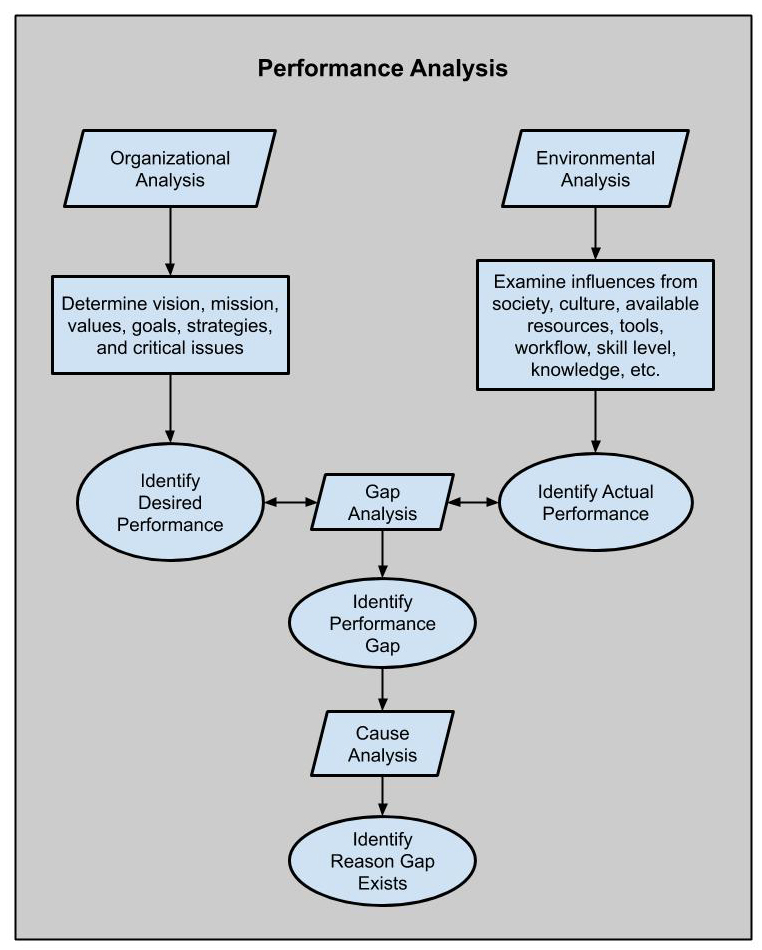Course: Performance System Technology. Spring 2020
Assignment: Design a graphic organizer to compare and contrast and share what you have learned in your reading regarding the following: performance analysis, organizational analysis, environmental analysis, gap analysis, cause analysis.
Response: From the readings, I got the impression that the organizational, environmental, gap, and cause analyses were all part of the Performance Analysis. In analyzing performance, you look at the organization (its vision, mission, etc.) and the environment (influences from society, culture, skill level, etc.) to determine the desired and actual performances. From there, the gap analysis is done in order to identify the difference between the desired and actual performances, and lastly, a cause analysis to determine why that gap exists. I’m honestly not sure how to “compare and contrast” – They’re alike in that they are all analyzing aspects of performance process, but each analyzes a different aspect and they join together as the overall performance analysis.
